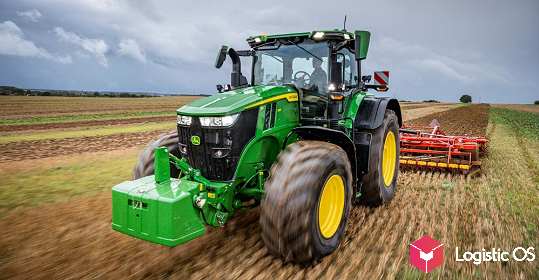According to a number of experts, by 2050 the demand for agricultural products will increase by about 70%.
At the same time, extensive development is possible with great difficulty: most of the fertile lands are already being used, moreover, there is reason to expect a decrease in their quality due to climate change.
Therefore, if there is no intensive development, i.e., an increase in productivity, by 2030 humanity may face a shortage of products.
One of the key factors that can increase productivity is the digitalization of the agro-industrial complex.
But in Russian realities, this process is extremely slow.
According to Igor Epaneshnikov, head of the Redmadrobot analytical center, despite significant state investments in the digitalization of the Russian agro-industrial complex, which began in 2017, now only 5% of companies operating in this sector actually use digital technologies.
And the share of land cultivated with the help of such technologies did not exceed 10% in 2020 (for comparison: in the USA and Canada, about 70%).
By 2021, this value has grown to 20%, by 2024 it is expected to be about 25%. But still, this is a very slow growth, and we need to accelerate significantly.
Automation is just getting started
Advanced sectors that are actively picking up new trends — for example, banking or retail — passed the stage of automating business processes in their activities around the mid-2010s.
Well, in the agribusiness sector, this process is just beginning now. Moreover, it is not fast and requires, among other things, a restructuring of the mentality.
Everything happens in stages: from the introduction of automation as an experiment to the assimilation of new principles of work, scaling them to the entire activity of the company. All this can take years, but if the agro-industrial complex wants to stop being a “perpetual laggard”, drastic measures must be taken urgently.
What hinders the digitalization of the agro-industrial complex?
One factor is the need to make large investments.
The state helps, but these funds are not enough, the company must independently seek the bulk of investments from its profits. However, there are problems:
For most new technologies, it is impossible to accurately predict what kind of effect in terms of money they will bring and after what time.
Significant investments are required, as a rule, the company does not have such money on its balance sheet. It remains to invest against the security of future income — however, their size is often difficult to predict.
And it’s not just about how big the harvest will be next season, but also about market prices for grain and other products, changing the size of quotas, duties, introducing or canceling restrictions. In such a situation, many companies simply do not take risks — and there is logic in this.
Another factor is the lack or weakness of the IT infrastructure.
Digitalization has many interesting tools to offer, from artificial intelligence that monitors crops and cow health, to harvesting robots and artificial pollinators.
But for all this to work, you need fast and stable 5G internet. And this is just a big problem: on many agricultural lands they have not even heard of it. To carry it out again, very large investments are needed.
Thus, everything depends on money, and it is unlikely that companies will want and be able to find it on their own.
Therefore, either strong financial support is required from the state, or the creation of understandable and predictable working conditions, where future income can be somehow predicted.

